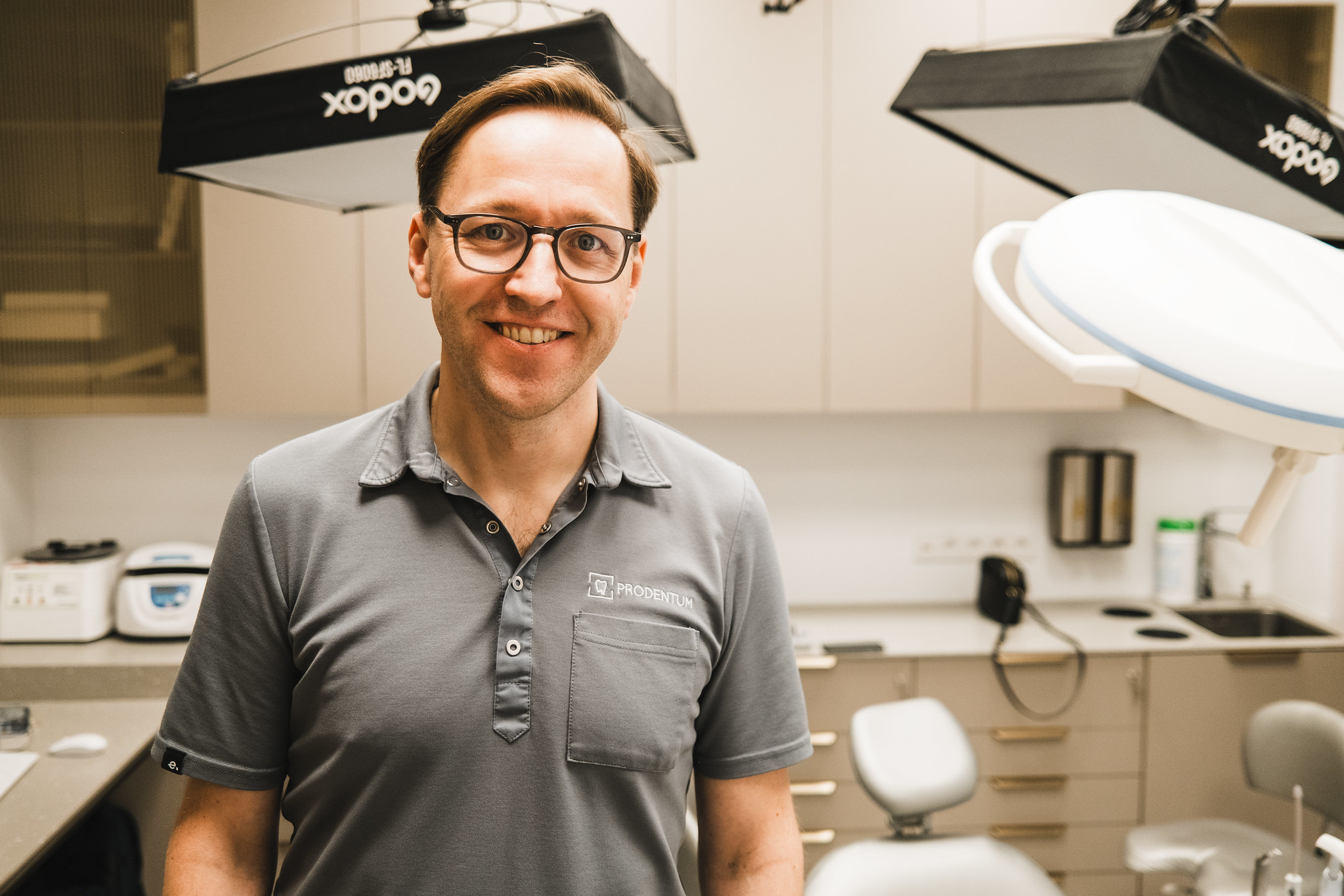 Prof. Vygandas Rutkūnas / MF archive
Prof. Vygandas Rutkūnas / MF archive
Last year, Prof. Vygandas Rutkūnas, a prosthodontist from the Faculty of Medicine at Vilnius University (VU MF), was awarded the VU Rector’s Science Award for his outstanding scientific achievements and contribution to the development of science, both at the University and across Lithuania, and for boosting the scientific prestige of Vilnius University around the world. In this interview, we asked the professor what it means to represent his profession, what the path of a scholar is, what qualities and competences are required, what the current innovations in dentistry today are, and many other things.
What does being a prosthodontist entail? What is your daily routine? Why did you choose this profession?
Well, I am an odonatologist but I specialise is prosthodontics. In other words, I am a specialist whose job it is to restore the chewing function. I see many patients every day who have lost teeth for various reasons and who have more than just aesthetic problems – their chewing and speech functions are impaired and they experience phonetic problems. It is my mission as a scientist and a doctor to solve these problems. So, I often have to deal with dental prosthesis, but mostly I treat cases of tooth loss that require artificial root implants, bone grafting, etc. I try to use the most appropriate and innovative measures in each case. My main goal is to restore the impaired or lost chewing function, but I never forget the aesthetic side – the human smile. Also, it is no secret that missing teeth or their altered shape have a strong influence on the quality of speech, so we must always control this aspect.
It may sound funny, but I never wanted to be a dentist. At school, I dreamt of aviation. But when the time came to choose, my parents, and my sister, who was herself, already studying medicine, helped me decide. Although I was not interested in studying medicine, dentistry seemed acceptable; mainly because I could use my knowledge of physics and biology, which were the subjects I found most interesting. Over time, I saw a fascinating synthesis of scientific disciplines in dentistry and especially in prosthodontics: the engineering aspect related to the exact sciences, and the biological aspect related to the human being. You could say that I chose dentistry somewhat by accident, but I came to the field of prosthodontics more intentionally. I like the fact that, in this field, the result of the work is very clear, visible, tangible and understandable, and the patient’s quality of life can be considerably improved.
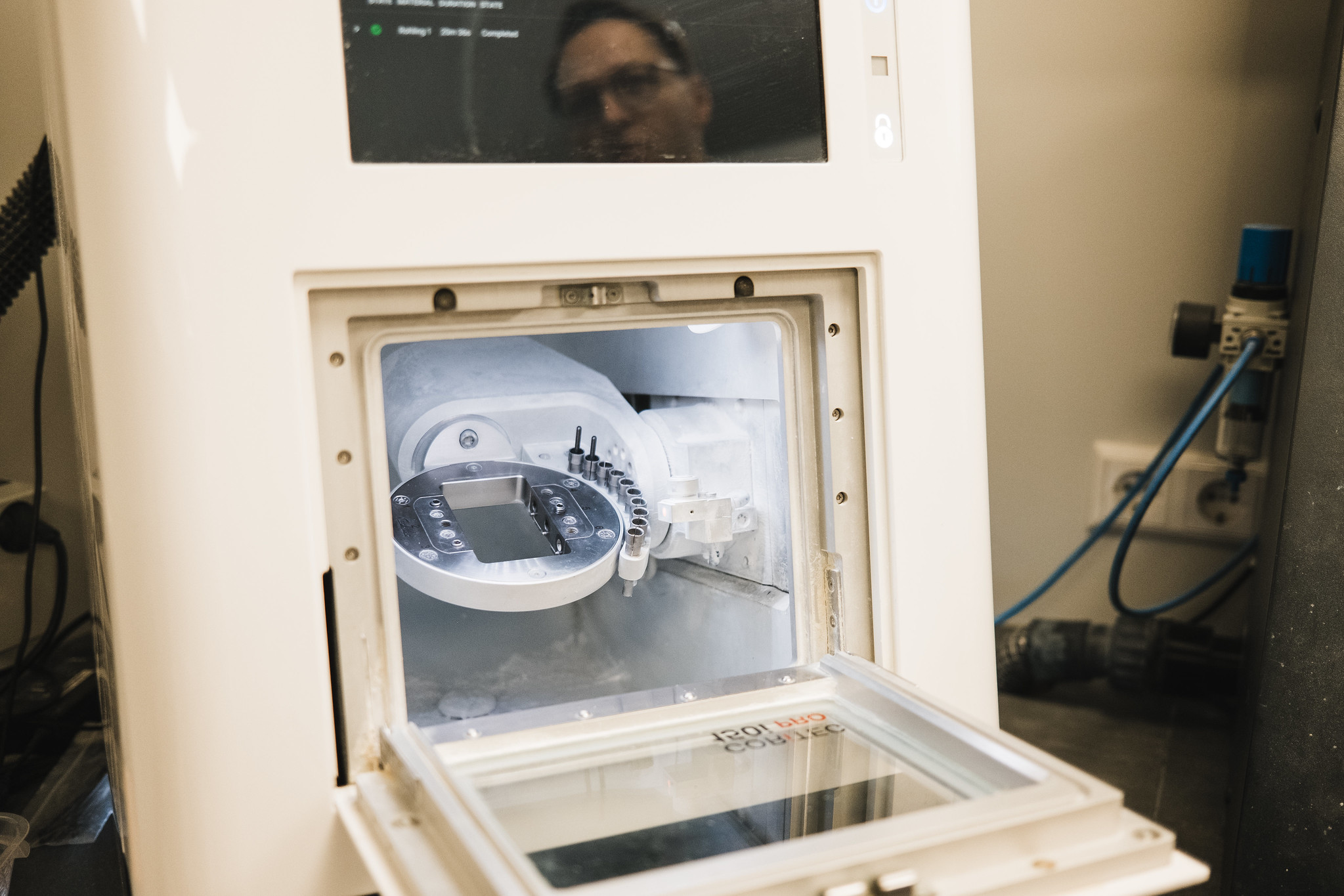 MF archive
MF archive
Tell us about innovation in dentistry today: how is digital technology helping your practice to achieve results? Can you tell us about a particular patient case that stanMFds out for you?
In my work, I actively make use of digital technology, which really helps to reduce patient suffering and discomfort, something dentistry was previously famous for (smiling). So you could say that digital technology improves our reputation! In dentistry, we cannot always predict the outcome of a treatment; we may not achieve the initial result, or there may be unforeseen obstacles, or biological and mechanical complications. With the help of digital technology, we can better manage these risks and achieve a better long-term result. All dentistry, and especially prosthodontics, requires a level of precision in the procedure that is almost unmatched in medicine. When it comes to the accuracy of various prosthetic procedures, we often talk about a precision level of 50 to 100 microns. In other areas, including medicine, the technologies used are often unsuitable because they are difficult to apply, precisely because of this insufficient level of precision. And it is even more difficult to work and to apply these technologies in a rather restricted and unforgiving environment – the human mouth. Precision in diagnosis, in the choice of treatment and drugs, and an individualised approach to each patient and each situation, are essential parts of my work. The most important task is to select and implement the most individualised treatment plan for each patient that takes into account all their personal characteristics. I believe that in the future, it will be possible to assess even more parameters. Patients recover differently, they tolerate drugs and treatments differently, and it is digital technology that allows us to select and implement the most appropriate treatment plan. The data that I collect during my practice can be collated, analysed, processed and used for artificial intelligence solutions using the same digital instruments. This is the perfect environment for science, self-control and personal development.
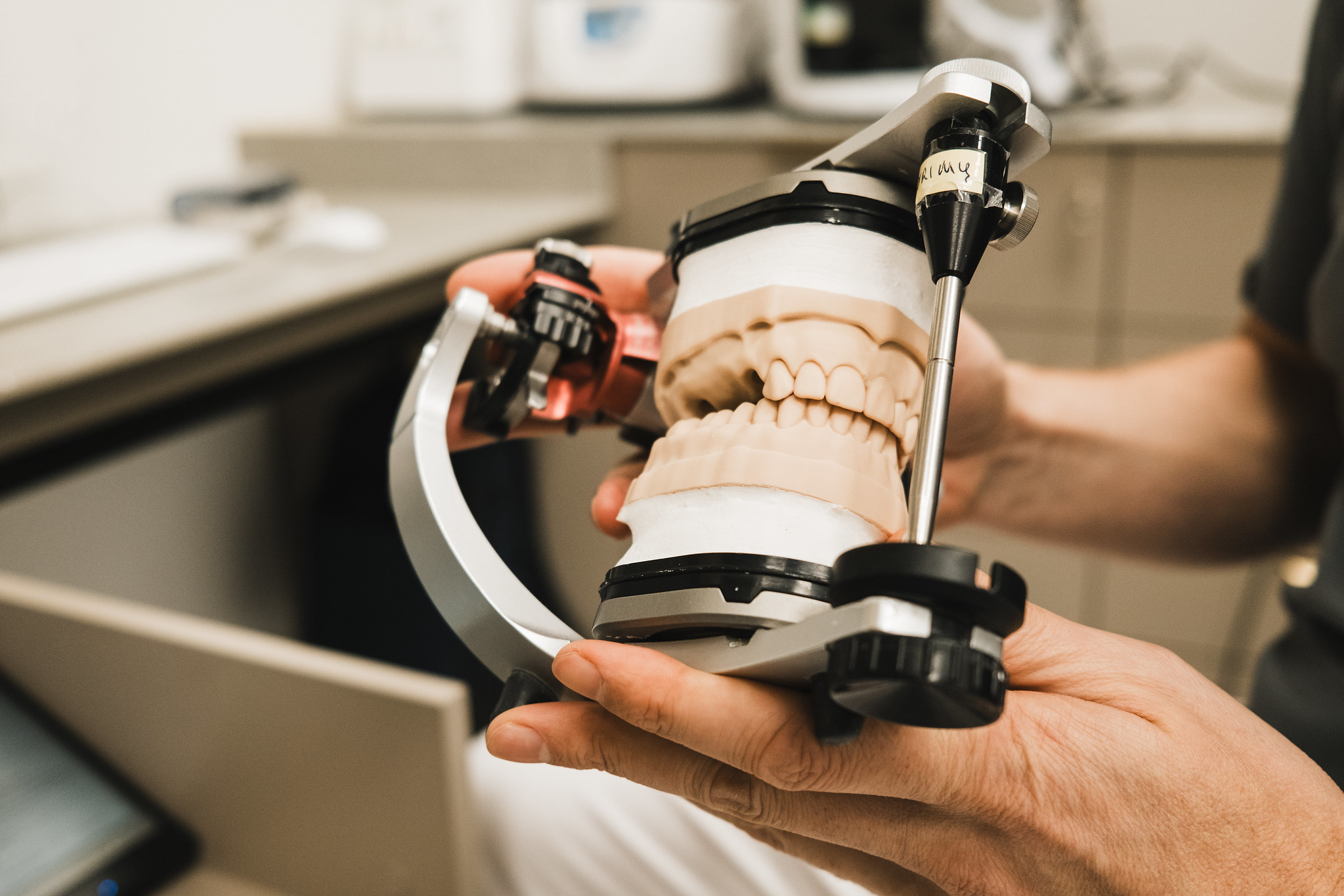 MF archive
MF archive
A classic case in my work might be the patient who has lost all their teeth and has been living with removable dentures for a long time. The quality of life for these people is very poor, often with minimal chewing function, poor speech quality and gastrointestinal problems. In the past, removable dentures were probably the only option because, due to the lack of bone density, implants were not possible. Now, with the current technology, we can apply several months of treatment, after which, patients leave the clinic with a full arch of dental implants, 100% restored chewing function and no fear of smiling. It’s so very rewarding every time you see what the scientific solution can achieve.
A unique case was at the Žalgiris Clinic of Vilnius University Hospital. It was a challenge we took together with our colleagues, Assoc. Prof. Linas Zaleckas, Assoc. Prof. Ieva Gendvilienė, and Dr Simonas Kaupas. The patient had an oncological disease and the entire lower jaw had to be removed. In previous practice, such a patient would have been left without a jaw and with very limited possibilities to eat. Modern technology made it possible to perform a small miracle, so to speak, by forming a replacement mandible extracted from the humerus, assisted by planned guided incisions. This surgery was carried out in consultation with colleagues from Belgium. The biggest challenge was, of course, the reconstructive surgery, but the implant and prosthetic procedures were quite standard. A person who might previously have been left without a lower jaw, today, looks great, can chew, function fully and enjoy life. These are quite risky procedures, but in the future, as technology improves, we will more easily be able to help patients with complex needs. In our practice, dealing with such exceptional cases not only gives us experience, but also contributes to the advancement of treatment services, and allows us to inspire our younger colleagues while at the same time helping patients to cope with a serious issue.
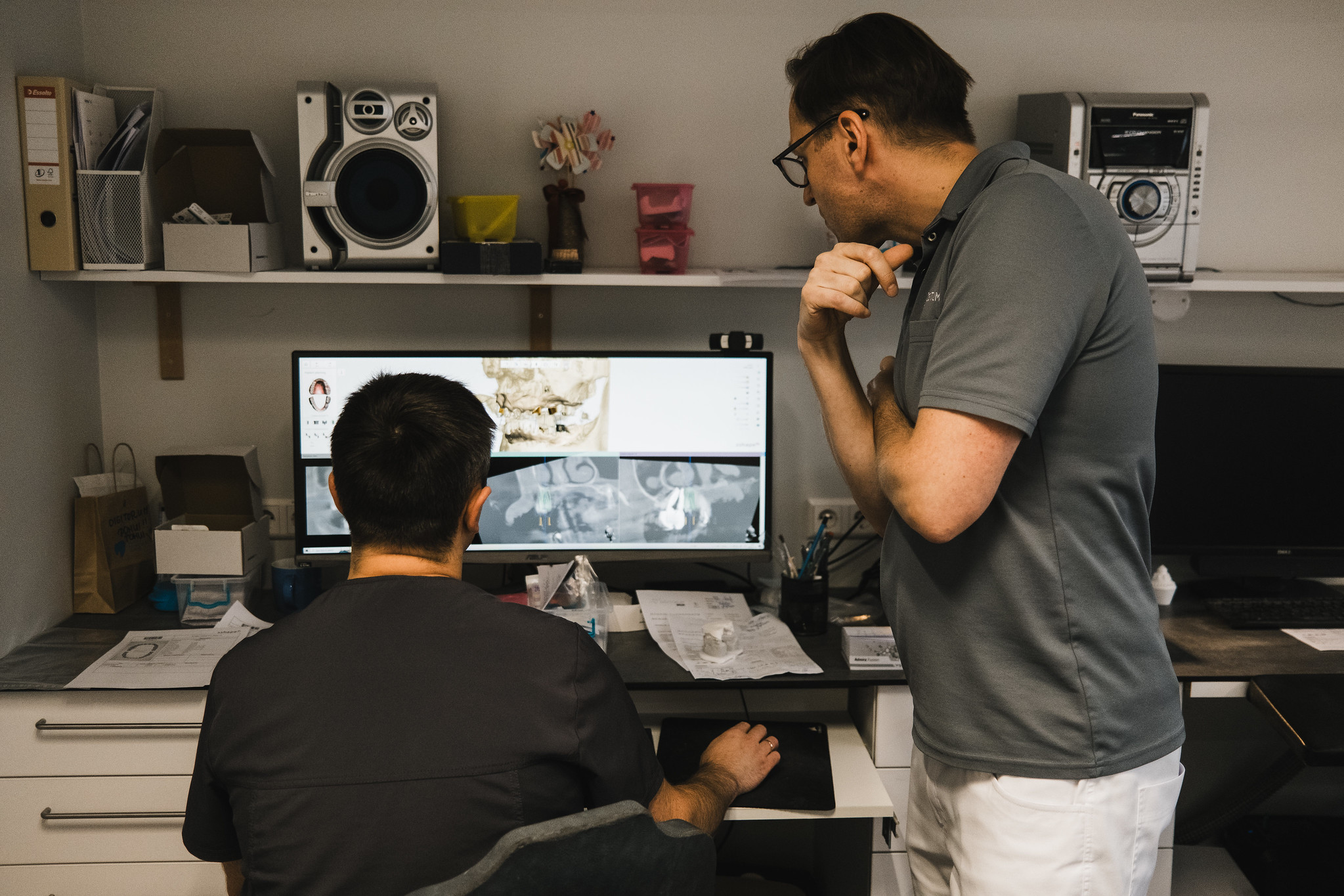 Prof. Vygandas Rutkūnas / MF archive
Prof. Vygandas Rutkūnas / MF archive
You are a practitioner, but you are also actively involved in research. What was your path to scientific research? Did you become a scientist by vocation? Tell us more about your research field and activities.
Science has always interested me. During my studies, I was a member of the Scientific Society of Prosthodontics Students. During my medical residency studies, I applied for a scholarship from the Japanese government for a research fellowship. I went to the Tokyo Medical and Dental University, enrolled in a PhD programme, did research there and decided to return to Lithuania to defend my thesis. The next stage of my career was teaching at the VU Institute of Dentistry, while also continuing my research. At this stage I became interested in new digital technologies and their application in dental implants and prosthetics. This field is interesting, meaningful and relevant, in all its stages: diagnostic imaging, the overall picture, surgical precision, implementation of the prosthetic plan, the use of CAD/CAM and 3D printing technologies for prosthesis, the precision of the final work and its monitoring. We were among the first in Europe to perform clinical trials with intraoral scanner-derived prostheses in patients who lacked some, or all of their teeth. We have also had many international collaborations with the universities of Zurich, Malmö and Leuven. Our cooperation with these institutions continues to this day.
My main research interests are precision implants and prosthetics. The Total Fit Workflow protocol has been developed on the basis of research and clinical practice. It consists of several steps. First, we produce digital images to give us an alignment plan. This takes the form of a digital patient model, which is used to simulate treatment, produce surgical guides and the other prosthetic components we require. Then, we surgically insert the implant. In the past we would have had to wait for the implants to heal. Today, however, we have a lot of information about the quality of the bone, and can select a specific implant that allows us to place a temporary prostheses immediately after implantation. Whereas 10 years ago a patient had to use removable dentures, now they can walk out the same day with temporary teeth and are able to chew soft food.
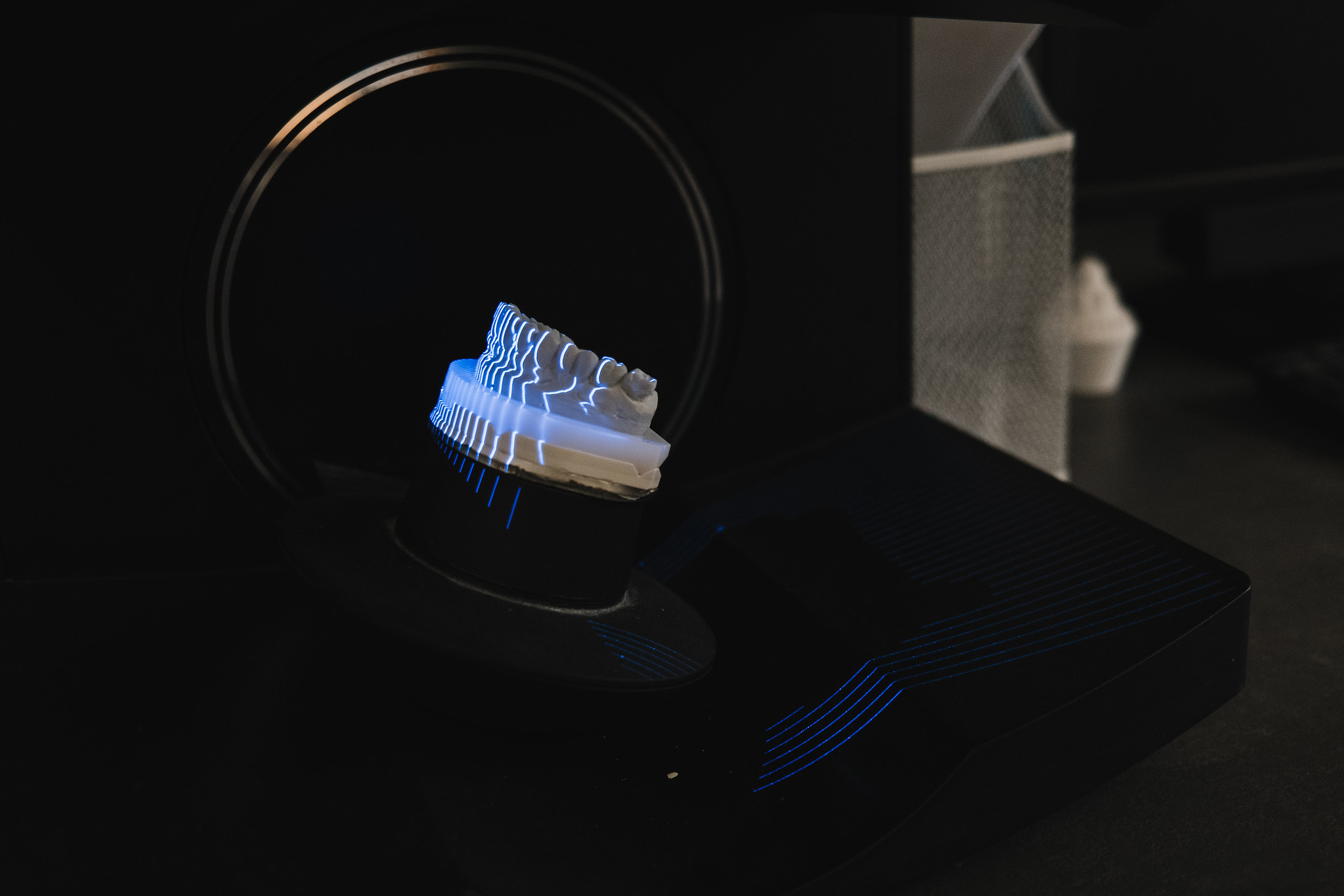 MF archive
MF archive
After healing, a prosthetic phase follows, which requires further precision in collecting all the information, like scanning, and recording the position of the implants. Then there is a laboratory phase, which involves a lot of engineering aspects (e.g. implant components). We look at what materials to use to make prostheses that can be as precise as possible, structurally stronger, easier to maintain and more aesthetically pleasing. The final stage is the prosthesis. The precision of prostheses and implants is still quite abstract in practice, so one of the aims is to objectify that precision. Finally, we monitor the results, analyse possible technical and biological complications and further improve our work.
Another area of my research interest is 3D bioprinting. This is the technology of the future. If 3D printers can be used to create simple materials, it can be used to create tissue constructs, sow a patient’s cells in them, to take tissue profiles from the same person or otherwise activate these to regenerate lost tissue. Missing bone tissue is the main issue in the case of dental implants. We are working on a project in this field, in collaboration with the Institute of Biochemistry of the Life Sciences Center at VU (Dr Egidijus Šimoliūnas, Dr Milda Alksnė, Dr Virginija Bukelskienė and other researchers), Assoc. Prof. Ieva Gendvilienė, and two companies (UAB Prodentum and UAB 3DCreative). We set ourselves the ambitious goal of not only conducting a scientific study, but also developing a practical solution – a product that will use a 3D bioprinter to produce the missing bone tissue component for use in clinical practice. We have already been working in this direction for 10 years. It requires a lot of patience, and is not devoid of scientific and psychological “potholes”. However, we are optimistic that this year, we may be able to put a certified product into practice for patients.
Involvement not only in practical dental work, but also in intensive research activities, inevitably leaves less time for hobbies and relaxation. But when the scientific activities seem really interesting and meaningful, then there is always the energy to move forward. On the other hand, in practice you are always thinking about how to do things better, and that’s how scientific explorations begin. So when you work with patients, there is always that extra research “engine” driving around in your head.
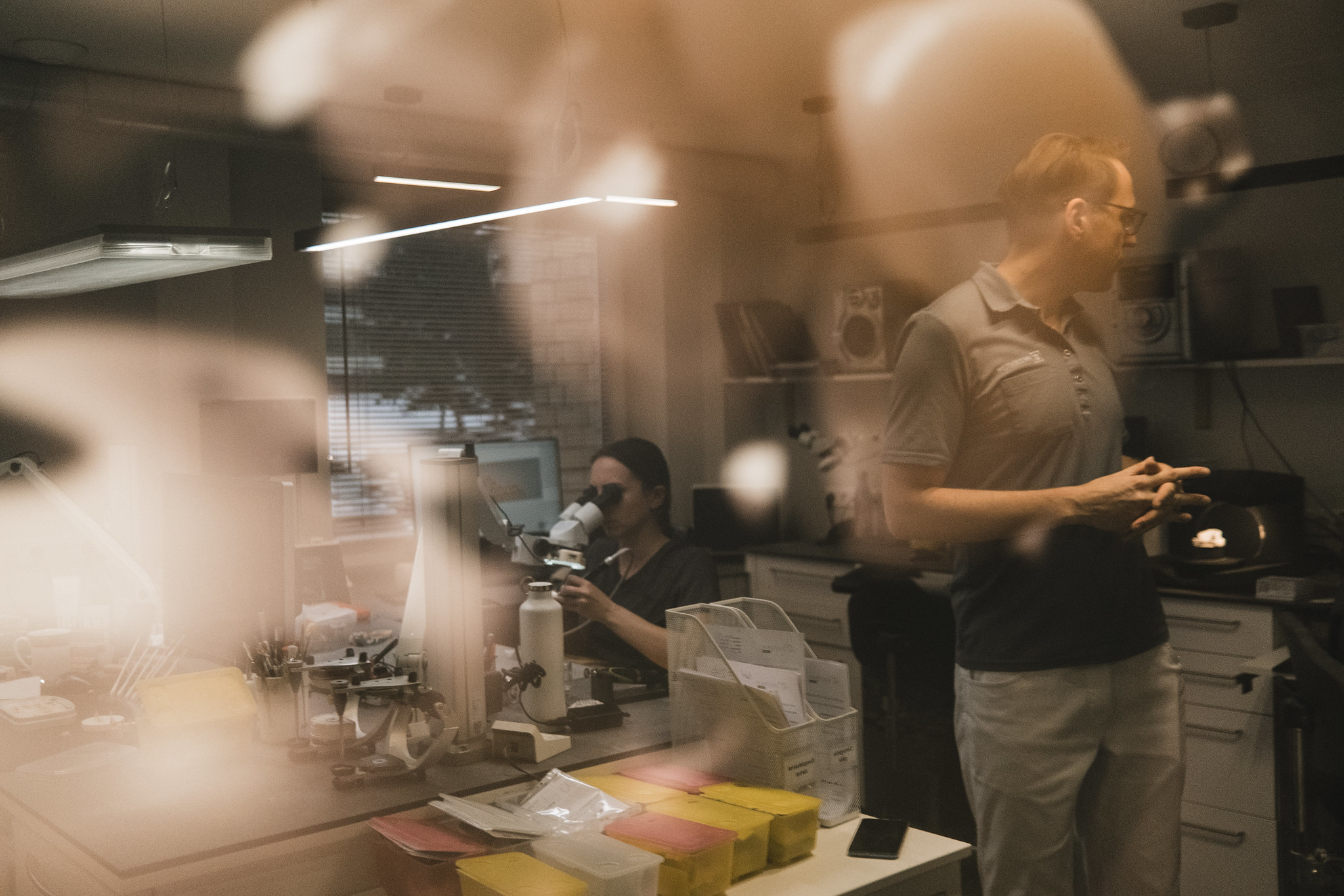 Prof. Vygandas Rutkūnas / MF archive
Prof. Vygandas Rutkūnas / MF archive
What does the VU Rector’s Science Award for Outstanding Scientific Achievement mean to you? Is recognition important to a scientist?
This award is very unexpected for me. Although it is awarded to one individual, I think it is recognition for the whole MF Institute of Dentistry. I have received a lot of support from both the former heads (Prof. Irena Balčiūnienė, and Prof. Vytautė Pečiulienė), and the current head of the institute, Prof. Vilma Brukienė, and I have many colleagues who inspire me to continue, who are raising the level of dental science in many other important areas. Indeed, after such an award, you start to better understand the importance of your work, you look at things a little differently, and you get to know the great work done by other VU scientists. So, this prize is really gratifying, gives additional motivation and is very encouraging.
Do you think there are differences between generations of scientists? If so, what have you observed?
I think that the human determinants are the same. The same “thirst” to know, to learn, to find solutions, to work as a team. However, the working conditions and the opportunities themselves have changed a great deal. Access to literature sources and knowledge is very different today. For example, I remember from my student days, when my colleague Prof. Linkevičius and I travelled by train from Kaunas to Vilnius in search of a missing book for the Lithuanian Medical Library, because we had to prepare a scientific report. Also, trips abroad seemed to be something special then. Nowadays, conditions are better, information can be obtained easier, faster, remotely, etc., but I sometimes miss that extra motivation. However, I am very pleased that today’s young scientists are doing research at a much higher level than we were able to do, and they are able to achieve excellent results.
In your opinion, what personal qualities and competences do you think are the most important in a research career? Which ones do you rely on?
In terms of innate competences, I think a lot of it comes from one’s family. I observe students, residents and PhD students and I admire how some of them have such tremendous inner strength and motivation. All of this, I have no doubt, is shaped in childhood, through the relationship with parents, the values they impart to their children, the examples they saw, the stories they experienced. That is a very important thing. Of course, to be a good scientist, it is not enough to be interested in science in general; one must be ambitious, have the will, the stamina to achieve, and not give up in the face of difficulties. We probably do not learn these values at university, but we can certainly strengthen them. What we provide at the university is the basic knowledge, the guiding tools. At the beginning of the journey, it is important to guide the student, not to stifle their creativity, not to force them to do things in the same way as others, and to foster their creativity and independence. First and foremost, research must be something you enjoy. A healthy sense of competitiveness is also important. I would like to encourage our young colleagues to not be scared and to not doubt themselves. If you manage to find your field, an idea that interests you, no matter how far away you are from your goal, the most important thing is to believe in it and to pursue it diligently and calmly as you travel along your path.
